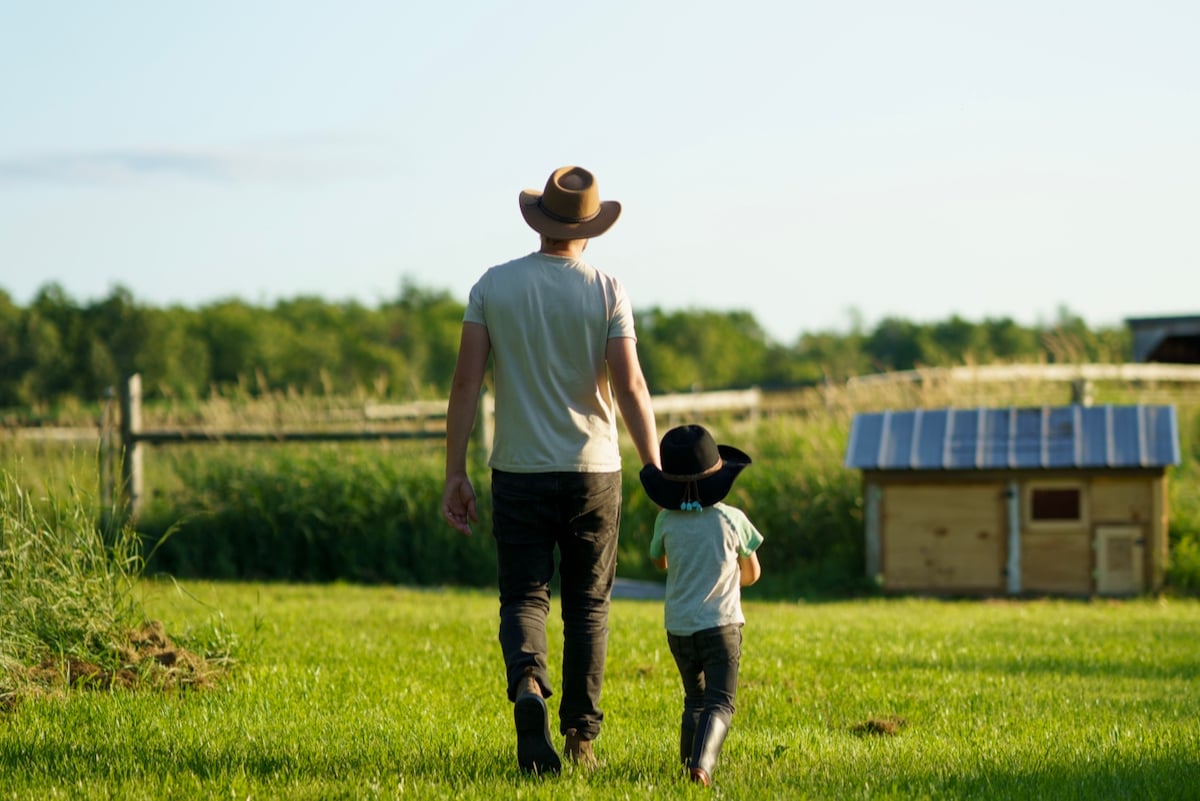Maybe a huge change in Canada’s land ownership really is underway. Certainly the time is ripe. The big money funds are desperate for a safe haven. Overseas interests are anxious to lock up production capacity, and investors everywhere are looking for a slice of what they see as agriculture’s windfall.
Everything seems to back up the growing suspicions that huge amounts of non-farm money must be flooding into Canada’s land market.
Everything, that is, except the sales statistics.
Despite all the forecasts about farmers becoming renters, and despite all the fears that land prices are rising out of the reach of farmers, almost all farmland still gets bought by farmers.
Read Also

A new spin on farm legacy
What does farm legacy look like for the next generation.
That doesn’t mean change isn’t coming, or that maybe the first glimmers of it might already be visible.
Yet this is hardly a wide-open, unregulated market, and the restrictions and regulations appear to be doing just what they’re designed to do, keeping a lid on how much acreage slips off farmers’ hands.
The country’s crystal ball gazers do see a permanent change coming. “In Canada, the whole trend toward other people owning farmland is going to increase,” says David Sparling, professor at the Richard Ivey School of Business at the University of Western Ontario. “What you’re starting to see are investment groups looking at farmland.”
Sparling knows he isn’t the only one making these predictions. Rural acres are attracting non-farm dollars because farmland represents a very stable investment, providing more security than volatile stocks and better odds than high-risk commodity markets.
Not only are farmland values rising, but history says they’re highly resistant to deflation, and of course they also provide a stream of rental income.
“All of those things are making people a lot more interested and aware of agriculture, and that makes them more aware of an investment opportunity,” Sparling says.
In a way, it’s nothing new. A lot of farmland has always been owned by people who do not make day-to-day decisions about how it is farmed, says Brady Deaton of the University of Guelph, who estimates roughly 35 to 40 per cent of land is rented in Canada.
Those owners are sometimes farmers, but more often they’re families in transition, either because the farmer has retired, or because the land has been inherited by family members who want to keep living on the family farm but who have jobs in town.
That’s part of what makes it so difficult to track reliable statistics… but it also doesn’t help that there are hardly any good government numbers on land ownership. Statistics Canada, for example, has no data on foreign or domestic investor ownership of farmland.
In the past four years, University of Manitoba economist Jared Carlberg has worked on two reports on farmland ownership patterns for Agriculture and Agri-Food Canada. Beyond that, Carlberg shrugs, “it’s more of a provincial issue than a federal one.”
Yet as you’ll see in these pages, the provinces themselves don’t exactly have a great record of tracking corporate, foreign, or investor ownership of farmland. Only the market tells the story.
At any price
Manitoba and Alberta
Tracking how much land is being gobbled up by non-farm investors is tough enough. Even harder may be the issue of trying to decide whether such non-farm ownership is good or bad for agriculture.
At first blush, it seems clear that it’s better for farmers to own the land they farm, and to have access to the equity gains from rising land markets. But non-farm investment in farmland is providing farmers a chance to expand their operations and capture economies of scale without having to acquire land themselves, says David Sparling a professor at the Richard Ivey School of Business at the University of Western Ontario.
Sparling questions whether farms should differ from manufacturing and retail sectors, where leasing and not owning is par for the course in everyday business.
“With land values and investment going up, farmers are starting to look at other ways of funding their business,” Sparling says. “If young farmers want to attract money that will help them farm, this is actually beneficial.”
Sparling believes there’s a shift in the view of young farmers as they no longer feel they need to own everything in their operation and are willing to rent from investor landholders. While it isn’t for everyone, Sparling believes it is a business model that will expand in the future.
“I don’t know many 30-year-olds with millions of dollars or access to banks that’ll lend that,” says Sparling, who says that rather than spelling the end of the family farm, non-farm investment may actually be beneficial. “It can help young people get into farming at a level that’s really serious and competitive globally that they couldn’t possibly do on their own.”
At the University of Manitoba, economist Jared Carlberg disagrees. Carlberg dismisses such arguments, which he says mirror those of investors and investment partnerships.
“Balderdash,” says Carlberg. “That is something that has to get said to make the notion of non-farmer ownership more palatable to the general public and some farmers.”
The investment trend isn’t friendly to the family farm, Carlberg says — particularly being “beholden to their corporate masters to make payments regardless of what happens to their own financial health.”
Farmland is vitally important to the wealth of farmers. Not only is land a source of security for credit, it is also a source of increasing wealth because it tends to appreciate over time. Accumulated over their lifetimes, farmers can sell land to realize often very significant capital gains when they retire, Carlberg says.
Farmers “already tried the serfdom thing and we didn’t like that. So people have a negative reaction to non-farmer ownership of farmland and I’m very sympathetic to that point of view,” Carlberg says.
The National Farmers Union is of a similar mindset and says corporate and investor farmland acquisitions may be the beginning of a rapid move to a sharecroppers-and-serfs landownership model.
Farmers weigh in
Edgeley, Sask.-producer Franck Groeneweg has mixed feelings.
“On one side, for the land that I own, my balance sheet looks a whole lot better. But for future investment, it’s going to cost quite a bit more and the competition for that land is much more as well,” says the grains, oilseeds and pulses farmer.
The ones who suffer are young farmers: “When land becomes a commodity that’s valued basically on who wants it the most, that’s when it gets really difficult for new entrants to get in,” Groeneweg says.
Whether owning your own land or renting it from non-farm investors is good or bad depends on your objectives, Groeneweg says. For short-term profitability, renting land might make the most sense as it allows a farmer to spread fixed costs over more acres, he says, but if rental costs climb along with land values, that could threaten profitability, he adds.
“I like to spread my risk a little bit, own some land and rent some land,” says Groeneweg, who, with his wife Kari, was selected Saskatchewan’s Outstanding Young Farmers for 2011. He adds he leans toward ownership, since long term it gives him the opportunity to increase his equity.
Grains, oilseeds, pulses and special crops producer Ryan Maurer also sees positives and negatives in the emerging trend of outside investment. For farmers with business models that call for concentrating on production and renting land and leasing machinery, there’s a good fit. The opposite is true for farmers who wish to own their land.
“It comes down to what is your business model? Do you want to take your cash and keep pouring it into operations and build a bigger operation faster? Or do you want to have ownership and build your acreage at a slower rate but take the appreciation out of the land?” asks Maurer, who farms in Grenfell, Sask.
As for foreign investment, neither farmer favours it.
“I don’t see the upside of it myself,” says Groeneweg, noting there are plenty of Canadian investors interested in Saskatchewan. In 2003, the province lifted a rule that had limited farmland ownership to Saskatchewan residents only, which allowed investment capital from Canadian citizens.
Maurer, who won the Saskatchewan Outstanding Young Farmers award in 2010 with his wife Lauren, says that just like PotashCorp, Saskatchewan farmland is an important resource for the province and its people. He also believes food security issues could arise for Canadians if foreign investment buys up massive tracts of farmland.
“Some of these countries have a lot of mouths to feed,” Maurer says. CG















